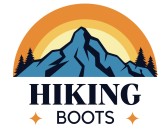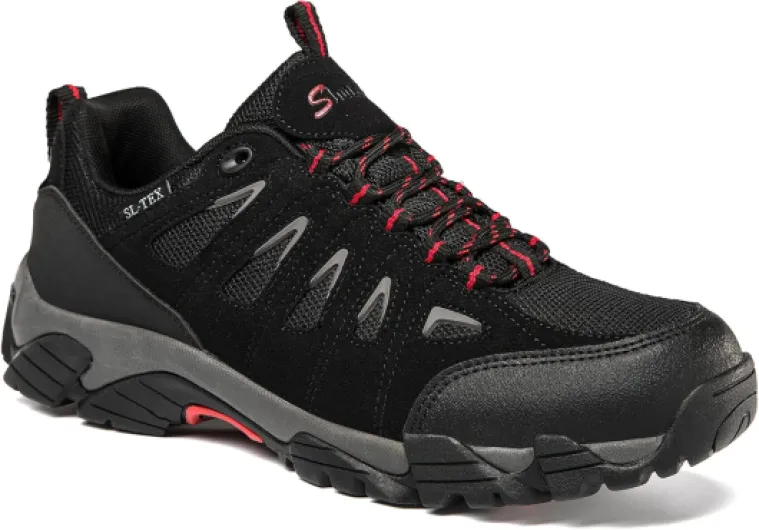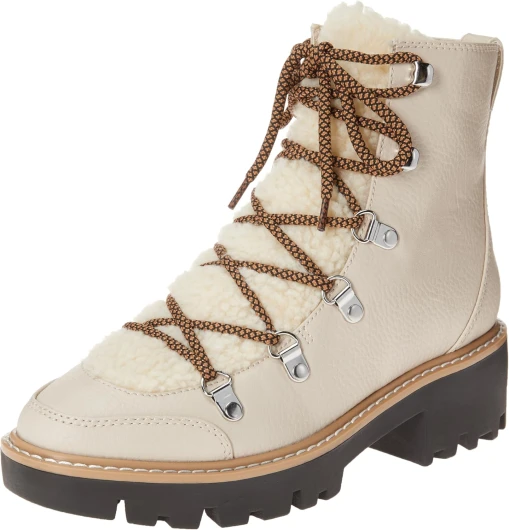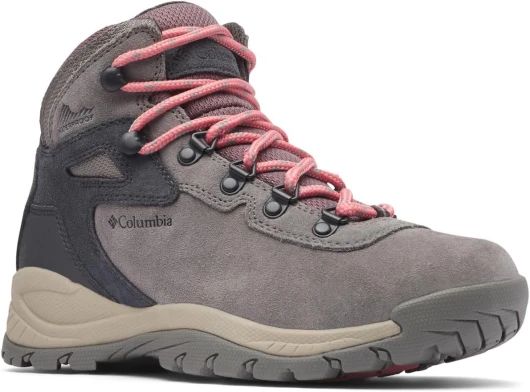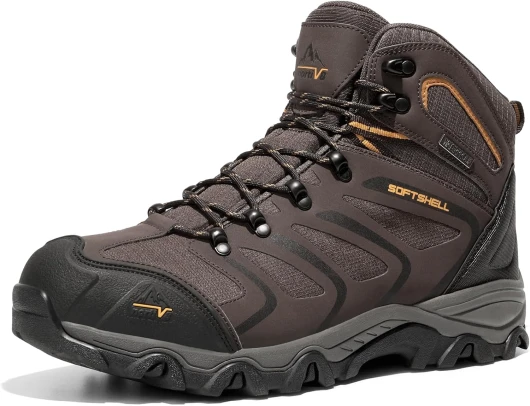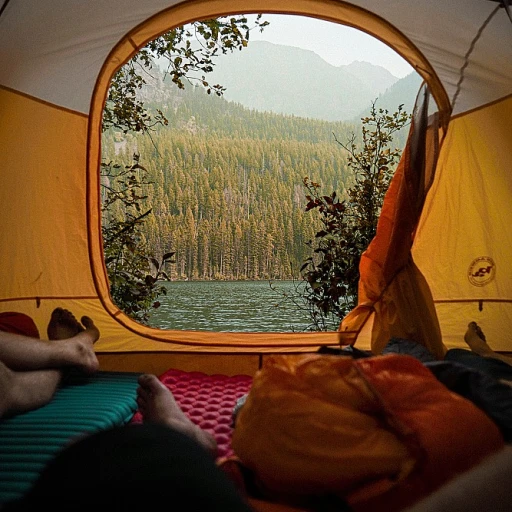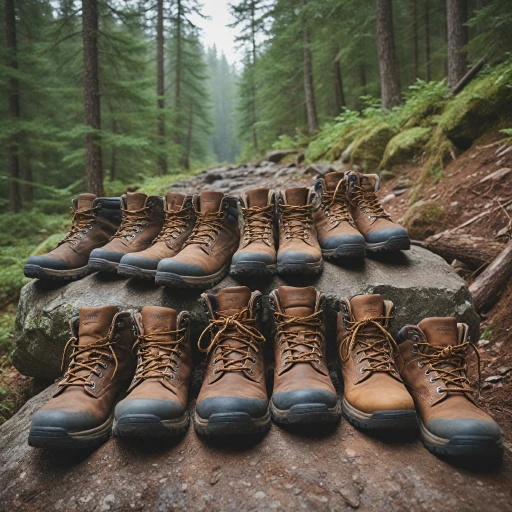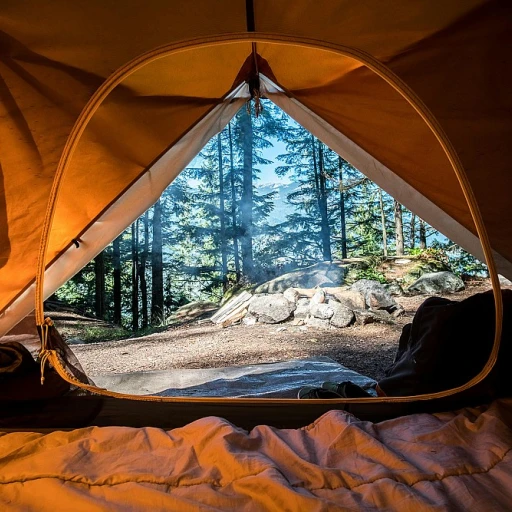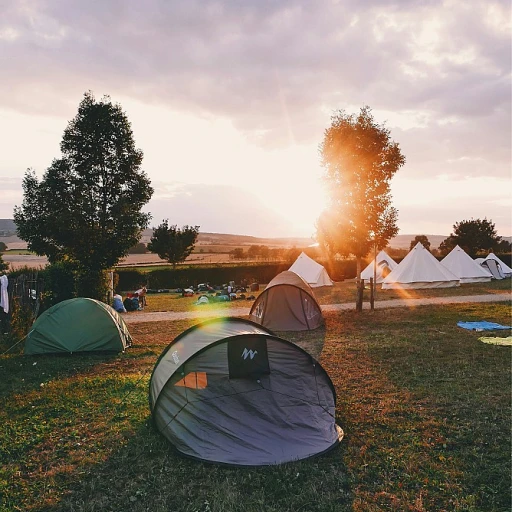
Understanding the Importance of Proper Fit
When preparing for a trail, finding the right hiking boots isn't just a matter of style—it's a crucial component that affects your overall experience on the trail. Whether traversing the rugged Appalachian Trail or enjoying a leisurely walk in a state park, the fit of your hiking boots can significantly impact your comfort, safety, and stamina. Understanding the nuances of a proper fit can save you from the dreaded blisters and fatigue, elevating your hike to a high adventure.
The Foundation of a Comfortable Hike
Embarking on a long distance hike requires boots that offer a snug yet comfortable fit. A well-fitted boot will provide support to your arch and ankle, ensuring that your feet remain stable whether you’re navigating rocky terrains or soft forest trails. The right fit mitigates the risk of slipping, tripping, or sustaining injuries, enhancing the enjoyment of every beautiful view along the way.
Ensuring the Right Fit
A boot that fits too tightly can cause painful blisters, while one that’s too loose can lead to instability. It's crucial that hikers direct their attention to trying boots on with the socks they intend to wear during their hikes. Many hikers find that walking along the trailhead direct is more enjoyable when their boots have ample room at the toe box yet hold the heel securely in place. Adventure seekers on a hike know well that in extreme conditions, a poorly fitted boot isn’t just uncomfortable; it can be a hindrance, affecting the entire trekking experience.
An in-depth understanding of how a boot should fit won’t just improve your current hiking trips but will prepare you for more challenging expeditions. It's about ensuring every step taken towards that breathtaking national park view is confident and secure. For more insights on choosing hiking footwear, consider exploring the benefits of rocker bottom shoes, which might offer the perfect balance of comfort and support for long treks.
Materials Matter: Choosing the Right Boot Material
Picking the Perfect Pair for Your Next Adventure
When selecting hiking boots, materials play an essential role in ensuring your comfort and performance on the trail. The right boot material not only enhances your hiking adventure but also caters to your personal hiking style, whether you're traversing the Appalachian Trail or exploring a state park.
Let's delve into some common materials to help you make an informed choice:
- Leather: Durable and supportive, leather boots are often favored by long-distance hikers. They offer superior protection, which is especially beneficial for high adventure trails. However, they may require more breaking time and maintenance to avoid wear over long distances.
- Synthetic Materials: Boots made from synthetic fabrics like nylon and polyester are appreciated for being lightweight and breathable. They are ideal for warm-weather hikes and those who hit the trail frequently. However, they might not last as long as leather boots.
- Waterproof Linings: If your hikes often lead you through wet environments, consider boots with waterproof linings. Keeping your feet dry contributes greatly to comfort and can help prevent blister formation. Just remember, while boots may be labeled waterproof, they still may not be entirely immune to water intrusion over prolonged exposure.
- Gore-Tex and Breathable Membranes: These technologies offer a blend of waterproofing and breathability, keeping your active feet dry without sacrificing ventilation.
Choosing material is a crucial part of selecting your perfect pair of hiking boots because it impacts everything from comfort level to durability. Your personal preference, hiking terrain, and expected weather conditions should all be considered carefully.
Keep in mind, your hiking boots are a vital component of your trekking gear, so investing in the right pair for your adventure can make all the difference on the trail. Whether you are a seasoned hiker or gearing up for your first backcountry trek, selecting boots that cater to your hiking needs ensures your journey remains enjoyable and minimizes the risk of mishaps along your hike.
The Role of Boot Design in Different Terrains
Design Elements for Varied Hiking Experiences
When you're assessing which hiking boots to invest in, consider how different boot designs cater to specific terrains and various hiking endeavors. The boot design, a critical factor, influences your comfort, safety, and performance on the trail.- Ankle Support: For high adventure pursuits like conquering rugged mountains or long distance treks, boots with high ankle support offer stability. This feature is particularly beneficial for trailhead direct enthusiasts facing uneven Appalachian trail paths or rocky alps mountaineering terrain.
- Sole Composition: The hardness or softness of a boot's sole can significantly affect traction capabilities. Think about the terrain you'll usually encounter. Rocky or muddy trails in a state park may demand a firmer sole, while softer soles work well for gentler hikers trail excursions.
- Weight and Flexibility: For active hikers who skip content not directly related to reducing the overall pack weight, lighter boots with flexible design elements allow more freedom and less fatigue during long hiking ventures. They cater well to distance hikers who value efficiency on national park trails.
- Ventilation and Breathability: If you are tackling a trail where permits might not allow long rests, having well-ventilated boots ensures your feet remain cool. This is crucial for avoiding blisters and discomfort.
Breaking in Your Hiking Boots: Tips and Tricks
Getting Comfortable with Your New Hiking Boots
Breaking in your hiking boots is a crucial step that many hikers, from the casual trail enthusiast to the seasoned distance hiker, often overlook. A proper break-in period ensures that your boots mold to your feet, reducing the risk of blisters and discomfort during those long-distance hikes. Here's how you can make the process smoother and more effective.
- Start Slow: Begin by wearing your boots around the house or during short walks in your local state park. This helps your feet adjust to the new gear without the pressure of a full hike.
- Gradually Increase Distance: As your boots start to feel more comfortable, increase the distance and difficulty of your hikes. Consider trails with varied terrain to mimic the conditions of a national park or the Appalachian Trail.
- Use the Right Socks: Pair your boots with hiking socks that wick moisture and provide cushioning. This combination is essential for preventing hiker trash like blisters and hotspots.
- Pay Attention to Pressure Points: If you notice any discomfort, address it immediately. Sometimes, adjusting the lacing or using insoles can make a significant difference.
- Embrace Trail Magic: Occasionally, you might encounter unexpected challenges. Keep a positive mindset and remember that every step brings you closer to a perfect fit.
Remember, the goal is to make your boots feel like an extension of your feet. With patience and the right approach, you'll be ready to tackle any trailhead direct to high adventure. Whether you're a tent person setting up camp in the Alps or a hiker exploring the vast trails of a national park, well-broken-in boots will enhance your experience. And as always, pack trash responsibly and leave no trace to preserve the beauty of our trails for future hikers.
Maintenance and Care for Longevity
Keeping Your Hiking Boots in Top Shape
For hikers who love to explore the vast trails of national parks or embark on long-distance adventures like the Appalachian Trail, maintaining your hiking boots is crucial. Proper care not only extends the life of your boots but also ensures they perform optimally on every hike. Here are some essential tips to keep your boots in excellent condition:
- Clean Regularly: After each hike, remove dirt and debris from your boots. Use a brush to clean the soles and a damp cloth for the upper material. This prevents the buildup of dirt that can degrade the material over time.
- Dry Thoroughly: Never store your boots wet. Stuff them with newspaper to absorb moisture and let them dry naturally. Avoid direct heat sources like radiators, which can damage the material.
- Condition the Leather: If your boots are made of leather, apply a leather conditioner periodically. This keeps the leather supple and prevents cracking, especially important for those who hike in varied climates.
- Inspect for Wear and Tear: Regularly check your boots for signs of wear. Look at the soles, laces, and eyelets. Addressing minor issues early can prevent them from becoming major problems on the trail.
- Store Properly: When not in use, store your boots in a cool, dry place. Avoid leaving them in a damp basement or a hot car, as extreme conditions can affect their integrity.
By following these maintenance tips, hikers can ensure their boots remain reliable companions on every trail. Whether you're tackling the high adventure of the Alps or enjoying a leisurely walk in a state park, well-maintained boots will support you every step of the way.
Hiker Direct: Streamlining Your Boot Selection Process
Streamlining Your Boot Selection Process
Choosing the right hiking boots can be a daunting task, especially with the plethora of options available today. However, understanding your specific needs and preferences can significantly simplify this process. Here’s how you can streamline your boot selection to ensure you’re ready for any trail adventure, whether it’s a short hike in a state park or a long-distance trek on the Appalachian Trail.
First, consider the type of hiking you’ll be doing. Are you a distance hiker tackling high adventure trails, or do you prefer leisurely hikes in national parks? The terrain and duration of your hikes will dictate the type of boot you need. For instance, long-distance hikers might prioritize durability and support, while those exploring state parks might focus on comfort and flexibility.
Next, think about the climate and conditions you’ll encounter. If you’re hiking in wet or muddy areas, waterproof materials are essential. On the other hand, if you’re hiking in hot climates, breathable materials will keep your feet cool and comfortable. Refer to our earlier discussion on materials to make an informed choice.
Don’t forget to consider the fit. A proper fit is crucial to avoid blisters and discomfort. Remember, a well-fitted boot will support your foot and prevent unnecessary strain, allowing you to enjoy the view without distractions.
- Try Before You Buy: Visit a store to try on different brands and styles. Walk around to ensure comfort and support.
- Read Reviews: Check online reviews from other hikers. Their experiences can provide valuable insights into the performance and durability of the boots.
- Consult Experts: Don’t hesitate to ask for advice from experienced hikers or store staff. They can offer recommendations based on your hiking habits and needs.
Finally, consider the additional gear you might need. If you’re planning a long hike, think about how your boots will interact with other equipment like backpacks or tents. Ensure your boots are compatible with your overall hiking setup to avoid any issues on the trail.
By following these steps, you can make an informed decision and choose the perfect pair of hiking boots. Whether you’re a seasoned hiker or just starting, the right boots will enhance your hiking experience and keep you active on the trails.
